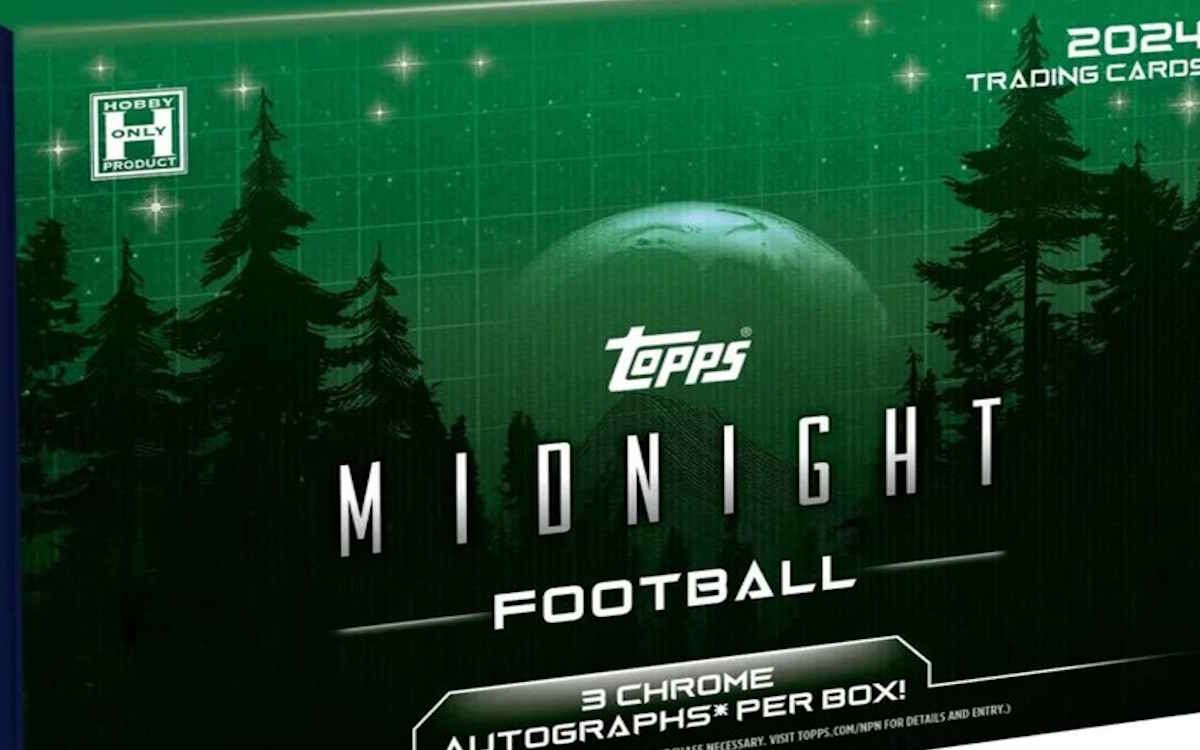

Major League Baseball is currently amid a lockout. We don’t know how long it will last, but it could threaten spring training and even the regular season if no agreement is reached. Therefore, we will ask the question on all of our lips regarding the MLB lockout and card value: what will this mean for the baseball card market?
The five-year-long bargaining agreement between MLB owners and players expired earlier this month. As a result, the owners immediately began a lockout, which froze most baseball activity. A lockout is the reverse of a strike. In a strike, the workers do not show up for work. Meanwhile, the employer doesn’t let the employees work in a lockout. Hence they are “locked out.”
Teams cannot do any of the following:
Meanwhile, players are barred from the following:

The lockout means players cannot enter MLB team facilities (look for MLB stadium replicas on eBay)
The players have several concerns:
I have absolutely no inside information whatsoever. But from what I can see, the differences are not all that substantial or existential. Instead, we have an argument over sharing the baseball profit pie. While the numbers are essential to both sides, all concerned realize that a long-term lockout would shrink the size of the pie and result in less money for everyone.
Another element in favor of a quick resolution is history. Strikes tend to be more devastating than lockouts because players choose more sensitive times (like before the World Series to strike). Meanwhile, lockouts have never led to the cancellation of any MLB games in the past. However, they have led to the delay or cancellation of spring training. And that remains a distinct possibility in this round.
Lockouts and strikes are nothing new for Major League Baseball. There have been four lockouts out of nine work stoppages in the game’s history. However, none of them had as dramatic an effect on the sport as the lengthy and destructive 1994-1995 debacle. The 1994 World Series was canceled, and the 1995 season was almost derailed as well.
The 1994-1995 strike went on for 232 days and was the longest in the sport’s history. It may have prevented Tony Gwynn from a .400 season (average still mattered back then!). The strike also stopped a homer race between Matt Williams and Ken Griffey Jr., which may have seen Ruth’s record broken.
The strike damaged the sport, most notably canceling an excellent Montreal Expos season and derailing that entire franchise.

Would Tony Gwynn’s rookie cards be worth more if the 1994 season had finished properly? (get one on eBay)
We don’t have much data on this. However, anecdotal evidence points to a significant hit for the new releases for the 1995 season. After all, many fans had soured on the sport after the cancellation of the World Series and Spring Training.
Keep in mind that baseball was the uncontested heart of the hobby at the time. Therefore, many card stores went out of business, and conventions were canceled, sometimes indefinitely.
The 1994-1995 strike damaged baseball. Nonetheless, it did bounce back and was hugely popular again in the late 1990s.
All in all, there is no reason to get apocalyptic about the results of a strike. But there are plenty of reasons for serious concern. For example:
Generally, the real problem is lowering the excitement around the sport. That will certainly lower prices for baseball cards. This did not prove an insurmountable problem in 1994-1995, but some things are different now.

The lockout could be bad for those invested heavily in current prospects like Adley Rutschman (get his cards on eBay)
However, at the time, the sport was more vital than it is today. Baseball has an increasingly old fan base and has had trouble attracting a diverse young audience.
The lack of appeal of baseball to younger fans can be measured through its comparatively meager presence on social media. For example, the most followed baseball Instagram account is owned by Mike Trout with 1.9 million followers. That places him in 130th place among athletes, behind big names from just about all other popular sports.
And the lack of popularity is showing in terms of attendance and viewership. Here are some concerning figures:
As we all know, baseball cards have traditionally stood at the forefront of the hobby. However, they are no longer the most popular cards for purchase. In addition, baseball cards consistently sell for a lower price than cards from other sports.
Let’s take a look at some comparisons on single card value. First, how do the cards of recent stars compare? All cards are PSA 10 rookie cards.
| Player | Base Chrome | Unnumbered Refractor | Auto |
| Vlad Guerrero Jr. | $200 | $127 | $133.50 |
| Fernando Tatis Jr. | $105 | $531 | $1,900 |
| Luka Doncic | $559 | $415 | $3,551 |
| Trae Young | $165 | $1,300 | $1,450 |
| Justin Herbert | $380 | $800 | $2,400 |
| Kyler Murray | $310 | $821 | $1,075 |
There are some difficulties in making this comparison. First, licensed baseball cards are produced by Topps, while football and basketball by Panini. Therefore, the releases are not fully comparable. In addition, it is currently the baseball offseason.
Nonetheless, these figures do paint a picture. Tatis Jr. does well for himself and outperforms some of the other autos. However, the overall situation is clear. The stars in football and basketball tend to go for more.
What about unopened wax? All of the products here are from 2020.
| Release | Blaster | Hobby Box |
| Topps Chrome | $53 | $320 |
| NBA Prizm | $110 | $769 |
| NFL Prizm | $111 | $1,451 |
The price differential here generally represents the differences between baseball products and their competitors from other sports.
The most commonly graded cards in history are baseball cards. Most notably, Ken Griffey Jr. rookies.
However, that is a legacy of the strong heritage of baseball card collecting. The recent trends are moving away from the baseball-centric numbers of the past.
According to Gem Rate, these are the most recent numbers over the past 30 days of grading (as of the publication of this article):
| Type Of Cards | Amount Graded |
| Trading Card Game (Pokémon etc) | 240,402 |
| Basketball | 215,999 |
| Baseball | 139,795 |
| Football | 106,662 |
| Soccer | 16,910 |
The numbers show that baseball is a distant second and could easily be surpassed by football if its popularity slips further. It is not inconceivable that soccer will eventually surpass baseball either, though the numbers are far lower at the moment.
The numbers show that from the perspective of baseball collectors and investors, there is serious cause for concern. A season canceled will seriously dampen the already waning enthusiasm of investors towards the sport. Coupled with the massive overproduction of cards in recent years, a baseball strike could truly crater the prices of cards.

Charizard may be more popular than Mike Trout (look for Charizad’s on eBay)
As if the lockout did not signal enough instability for baseball cards, the production of cards is also in an uncertain spot. Fanatics reached an agreement with the Major League Baseball Players Association (MLBPA) and MLB itself for the rights to produce cards. The deals start in 2023 and 2025, respectively.
That means that the next season is the last one with a traditional fully licensed Topps release. Why is this an issue? It is quite possible that after a troubled lockout season, collectors will come back and see that their favorite products (think Bowman and Chrome) are no longer available.
How likely are they to invest heavily in new and untested products? Even without a lockout season, this would be a serious problem.
There is always a considerable off-season price decline in any sport. We certainly see one with baseball cards right now. The lockout will only exacerbate the dip, as many fans will be alienated or at least disinterested for the time being.
But what should you do about it? The standard advice amongst investors is to “buy the dip.” However, that only applies if you strongly believe in the long-term outlook of the product. I see no particular reason to be enthusiastic about the future of baseball or baseball cards. This judgment is doubly true if the current lockout gets out of control.
Surviving tornados and ripping 3 boxes of 2024-25 Donruss Mega NBA sports cards.
Gamstop is HACKING the cards and collectibles industry
Is buysportscards.com a good place to Buy Sports Cards?
We Tried GameStop's PSA Card Grading and Got Surprising Results!
Can you crack a TAG graded slab barehanded?
Comparing Tag Grading to PSA: Slabs, Prices and More!
BIG news from CGC grading!
5 HUGE redemption in 6 boxes of 2025 Heritage?

© Copyright 2025 - All rights reserved Cardlines.com / Media Techs LLC - Sports Card News, Reviews, Releases and BREAKS - #thehobby.
Important: When you click on links to various merchants on this site and make a purchase, this can result in this site earning a commission. Affiliate programs and affiliations include, but are not limited to, the eBay Partner Network.
Top Manchester United trading cards
Cardlines 107 minutes ago